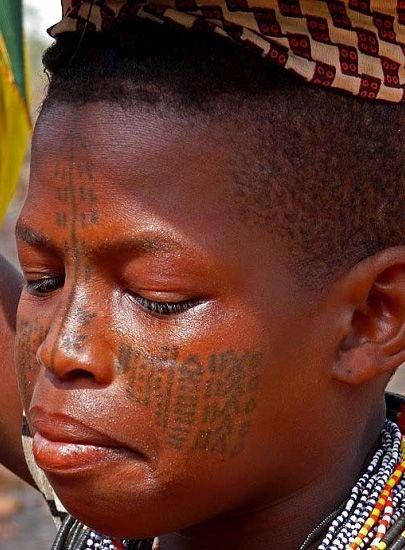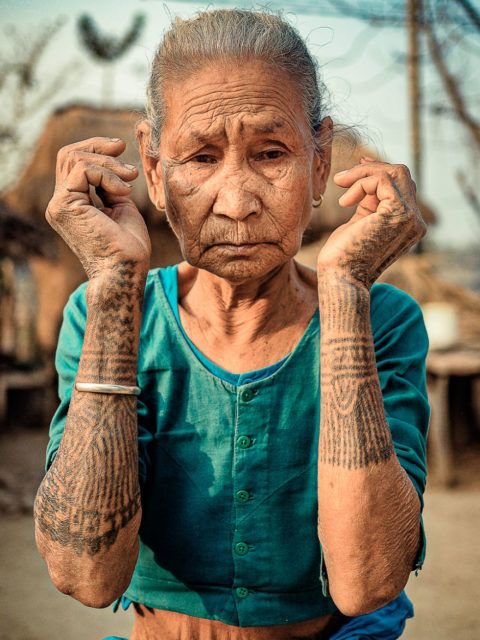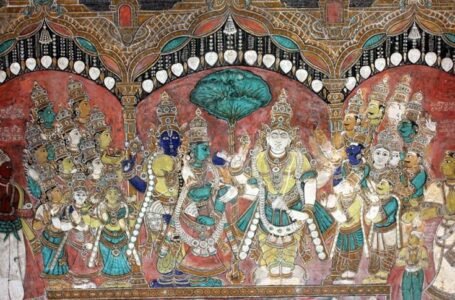Siddis: The African-Indian Tattoo Tradition

Shed light on the Siddi community in India, descendants of African slaves, and their distinctive tattooing practices that blend African and Indian cultural elements.
There is a special community that stands as a live example of the centuries-long blending of many civilizations in the center of India’s cultural tapestry. The interesting tattooing customs of the Siddis, ancestors of African slaves who ended up in India, have helped them to carve themselves a unique identity. These tattoos are more than simply cosmetic skin tats; they are evidence of the blending of Indian and African cultural components to produce a really distinctive culture. The Siddi community is notable as being a distinctive and intriguing population that highlights the blending of African and Indian origins. The Siddis are descendants of sailors and African slaves who came to Indian beaches centuries ago. They have not only contributed to the country’s rich cultural environment but have also preserved their unique customs, such as the practice of tattooing. This article explores the Siddi culture, offering light on its history, tattooing customs, and the fascinating fusion of African and Indian cultural aspects that give its customs such allure.

The Siddi Community: A Mysterious Tradition
The Siddi group has a long history that dates back to the seventh century when African traders and slaves first came to the Indian subcontinent. These people, who primarily came from the coast of East Africa, were transported to India by Portuguese, Arab, and Indian traffickers as slaves or sailors. They developed a distinctive community throughout the years, retaining their African heritage while assimilating aspects of Indian culture. Siddis are now widespread throughout India, with notable groups in the states of Karnataka, Gujarat, Maharashtra, and Andhra Pradesh. Despite the difficulties Siddis have had as a result of their historical history, they have been able to maintain their cultural identity via their unique traditions, including their fascinating tattoo customs.
Siddi Tattoos as Art: A Fusion of Cultures
Siddi tattoos are a vivid illustration of the cultural interchange that has taken place between India and Africa. These tattoos are much more than simply body art; they are a complex tapestry of symbols that tell the journey and fusion of the Siddi people. Siddi tattoo themes sometimes take inspiration from both Indian and African civilizations. Geometric designs, zigzags, and symbols that were historically utilized in African body art are examples of African influences. Peacock feathers, lotus blossoms, and images of Hindu deities, on the other hand, are all evidence of Indian influences. The peaceful blending produced by this fusion refers to the Siddi community’s common past.

Identity and spirituality in tattoos:
Siddi tattoos are more than just decorative; they are essential in identifying both personal and group identities. These tattoos have a history of being acquired markers that signify landmarks and accomplishments within the community. The transition of a Siddi from infancy to maturity was frequently marked by the acquisition of new tattoos, each of which told a unique tale. Siddi tattoos can have a spiritual meaning. Many of the patterns and symbols are thought to provide blessings and protection. For instance, tattoos of the Hindu goddess Durga, who represents power and protection from evil forces, are common. The spiritual fusion of African and Indian traditions exemplifies the syncretism that characterizes Siddi culture.
The Painful Yet Revered Process of the Artist:
Siddi tattooing is a painstaking, skill-intensive practice that demands accuracy. Instead of employing contemporary tattoo equipment, the tattoos are manually pricked. The community’s strong ties to the environment are demonstrated by the fact that the ink is frequently manufactured from natural components. The act of getting a tattoo is not only about the finished product; it is a social activity that unites generations. Elders frequently play a big part in teaching art to younger community members. This technique not only assures the tradition’s maintenance but also promotes intergenerational harmony and a feeling of solidarity.

Problems and Recovery:
Even though the Siddi tattoo tradition has endured for generations, there are still difficulties with it. Younger generations are drawn more and more to current patterns and lifestyles as modernization spreads across India. The persistence of this distinctive cultural legacy is threatened by this change. The Siddi tattoo heritage is being promoted and preserved via various initiatives. The technique is being documented and revived by cultural groups, scholars, and even lone Siddi craftsmen. Furthermore, the Siddi community is making efforts to guarantee that the tattooing industry survives by appreciating the worth of their cultural past.
Cultural Renewal and Knowledge:
Siddi cultural projects and groups are making a concerted effort to revitalize and promote their history. Festivals, workshops, and exhibitions provide Siddis with a stage on which to display their diverse cultural heritage, including their tattooing customs. In addition to celebrating the Siddi identity, these initiatives help the locals feel a feeling of pride and belonging.

Problems and Prospects for the Future:
Even though the Siddi community’s tattoo tradition is a potent representation of cultural fusion, there are obstacles to overcome. The Siddi culture is at risk of disappearing over time because of a lack of written records and the oral form of traditional transmission. It is crucial for Siddi communities and academics to work together to conserve, promote, and record this distinctive cultural legacy.
Conclusion:
The Siddis’ unique tattooing customs provide a glimpse into the intricacies of cross-cultural interaction and the tenacity of legacy. This community illustrates the beauty that may result from embracing diversity via the tale of oneness between African and Indian cultures that is told through their tattoos. Let’s not just admire the exquisite tattoos on their bodies, but also the rich tapestry of history and identity that Siddi tattoos symbolize. Siddi tattoos are a physical representation of the resilient spirit of a culture that defies classification. The cultural landscape of India has been permanently altered by the Siddi community’s migration from the African coasts. Their unique tattooing techniques are a reflection of the community’s resiliency, flexibility, and liveliness as well as the blending of African and Indian components. We must encourage the Siddis’ attempts to maintain their traditions and pass on their stories to future generations as we honor their extraordinary contribution to Indian culture.


